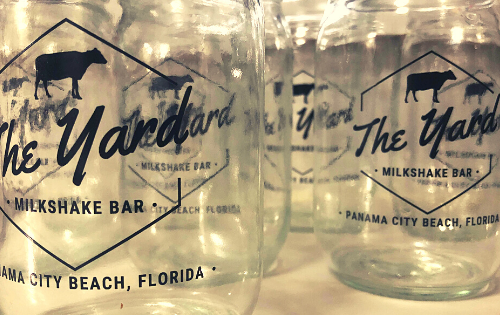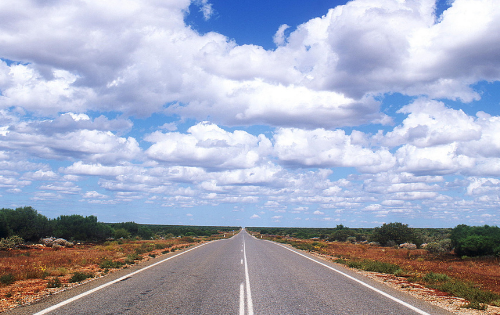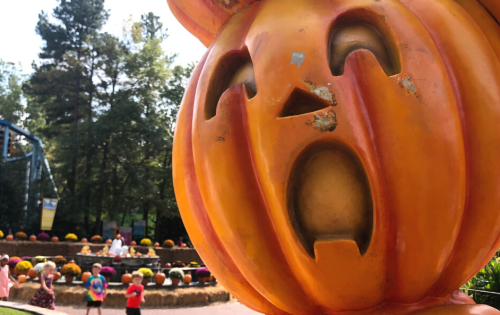Mirror, Mirror: Reflections of American Stories in Disney Parks
Several months ago, I heard a report on NPR that a Disney parks exhibit was coming to the National Museum of American History. I finally got a chance to see Mirror, Mirror: Reflections of American Stories in Disney Parks on our recent Spring Break trip to Washington, DC!
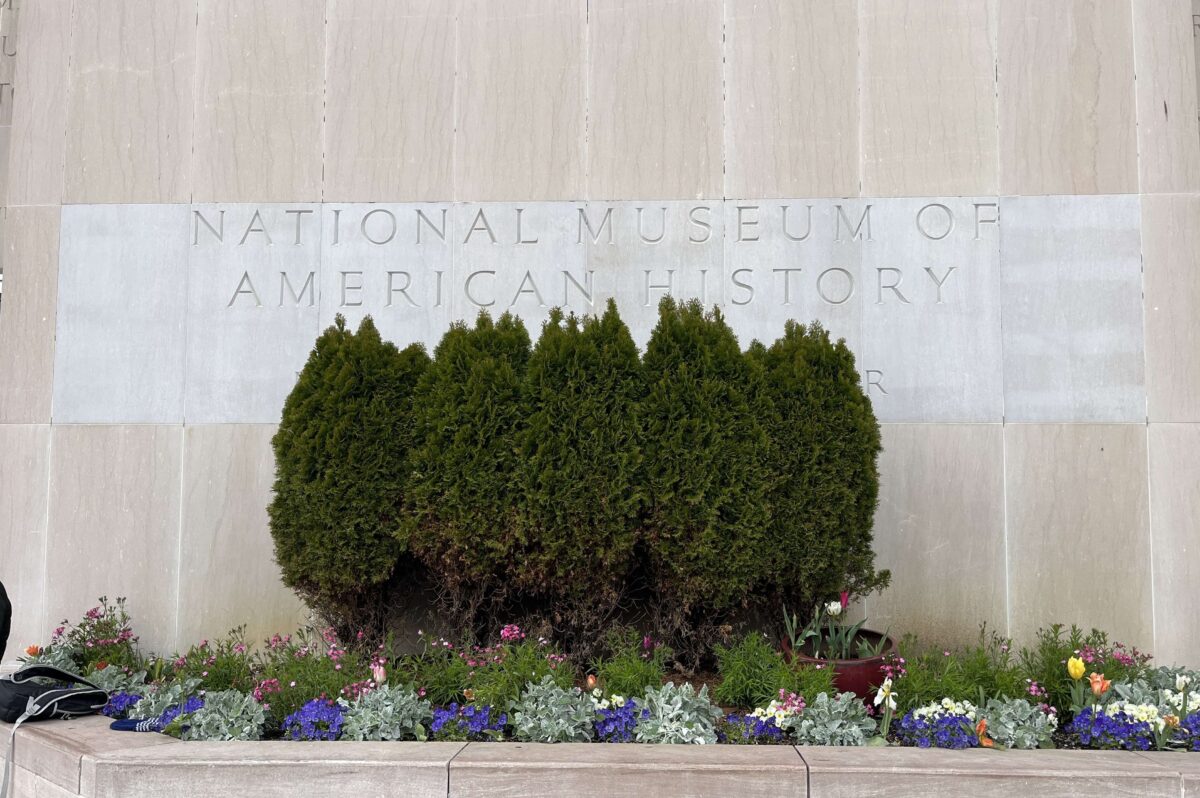
Mirror, Mirror: Reflections of American Stories in Disney Parks
Mirror, Mirror is an exhibit that focuses on what it means to tell American stories. The parks are designed to entertain, delight, and educate, but the stories told in the parks reflect the values of the time. Several groups of people who were not represented and those who have been misrepresented have asked the company to make changes over time. The parks have changed, adapting to reflect who we are.
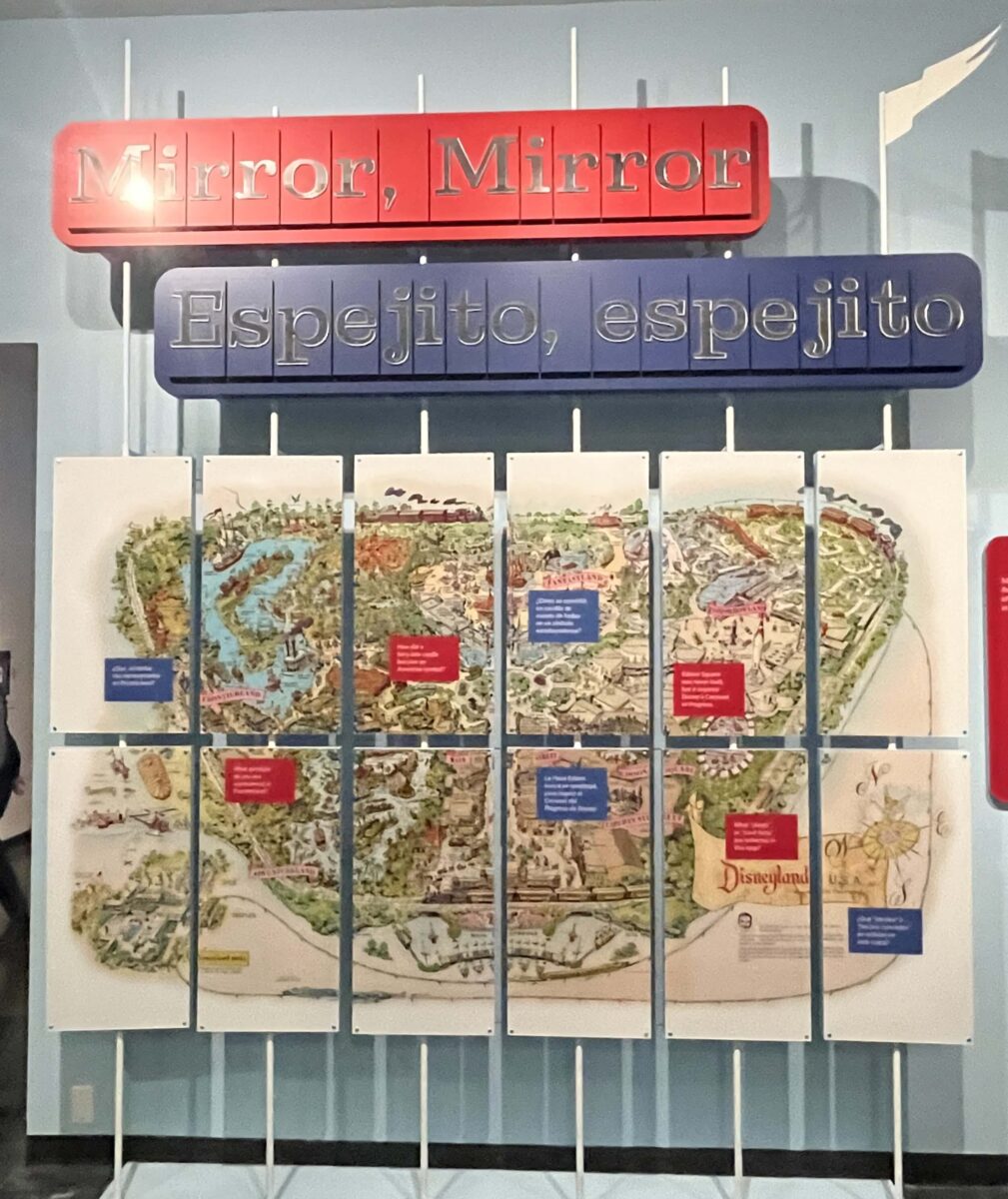
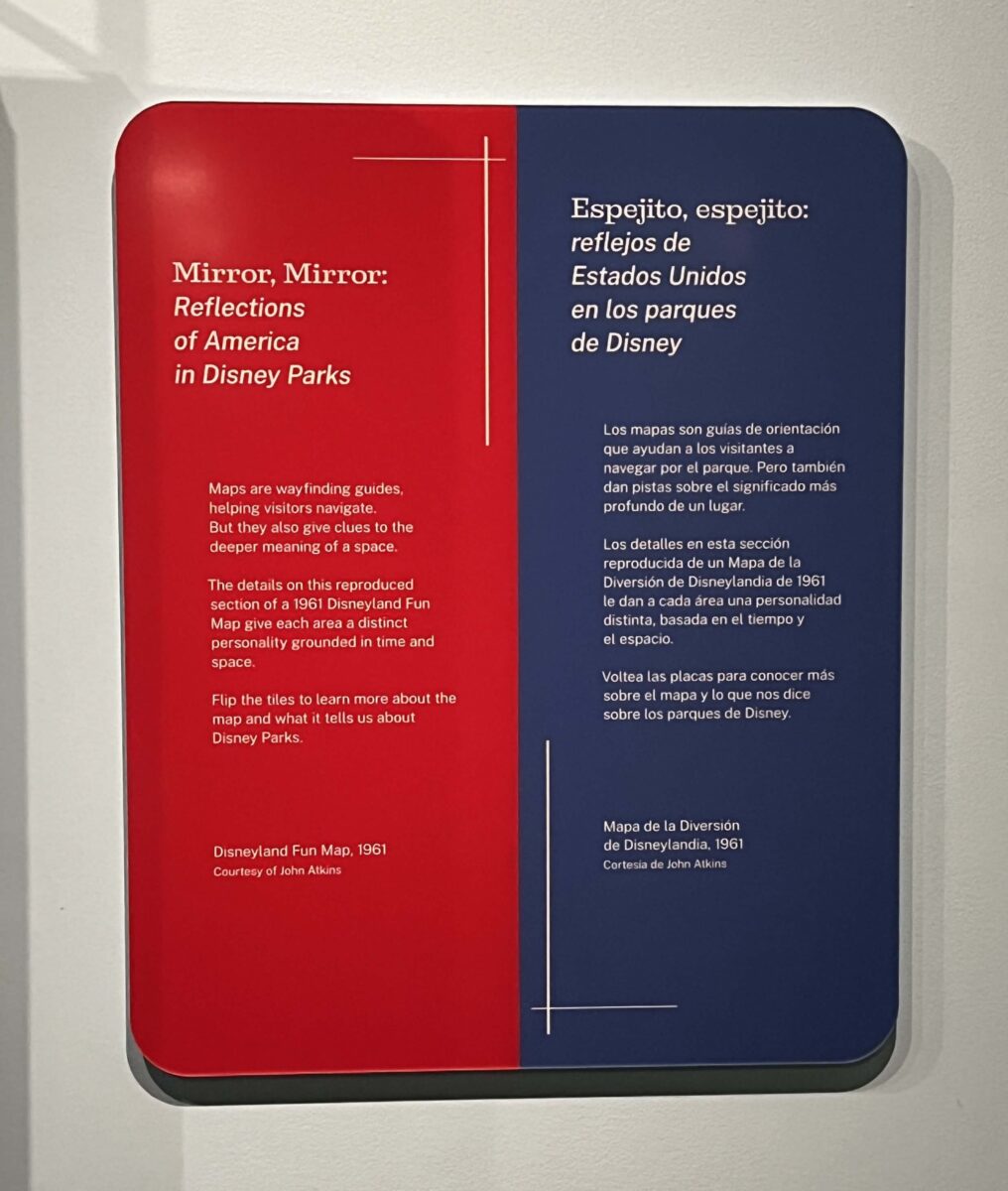
We were welcomed to the exhibit by a giant, interactive map of Disneyland. Each panel on the map spun independently, revealing messages about Disneyland and this exhibit on its other side. I believe this was the only interactive section of the exhibit.
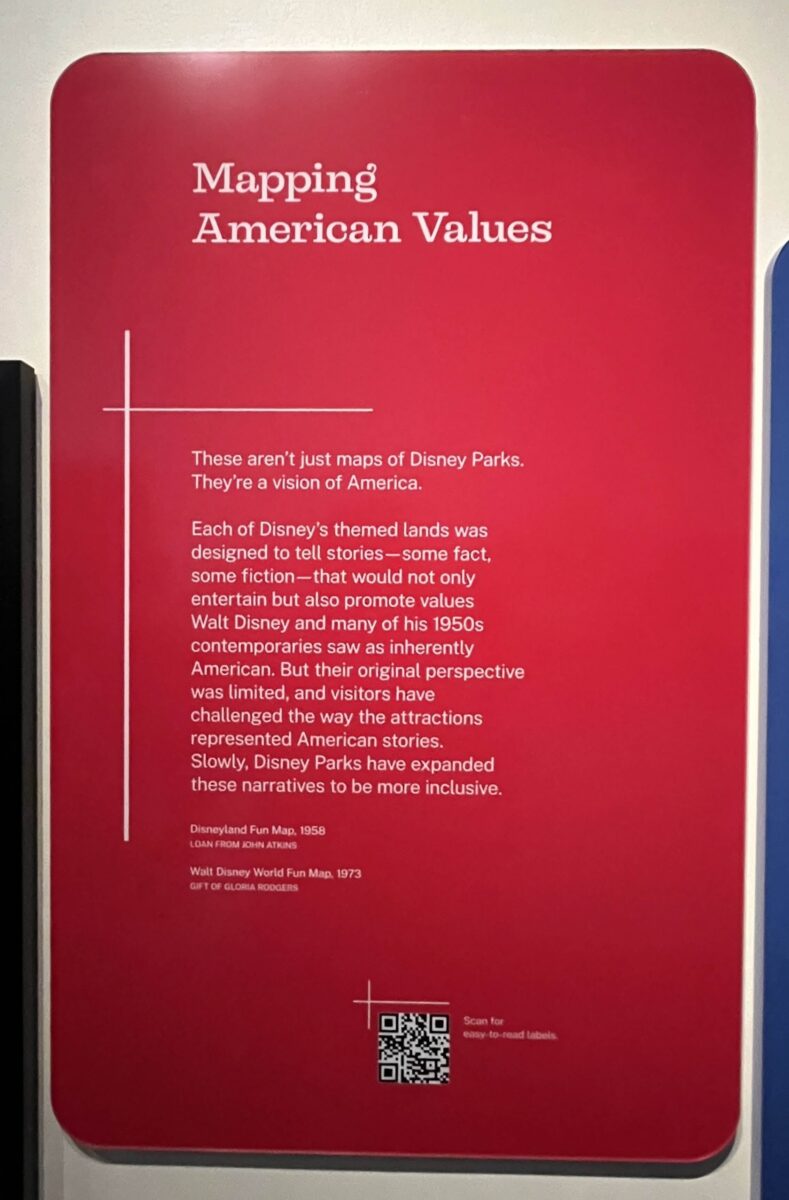
The “Mapping American Values” section of the exhibit was used to show the changes in the parks. At first I busied myself with trying to see how the attractions had changed. Soon I realized that they weren’t the only changes to the maps.
Disney Parks have themed lands. Each land tells stories. Some are true, and some are made-up. Walt Disney wanted these stories to make people happy. He also wanted them to teach people about America.
But Walt Disney’s view of America left out some people. Over time, those people have asked the Walt Disney Company to make changes. Disney Parks are working to tell a wider story about America that includes more kinds of people.
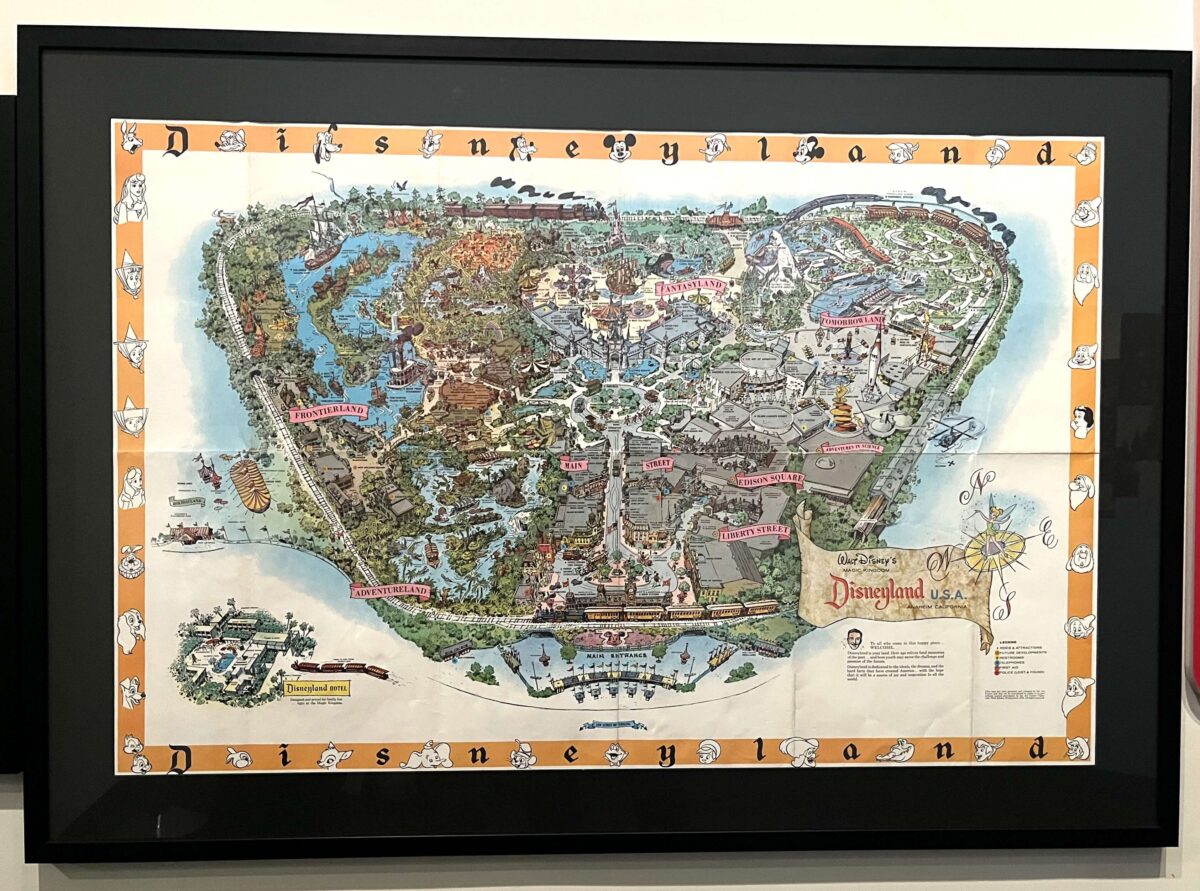
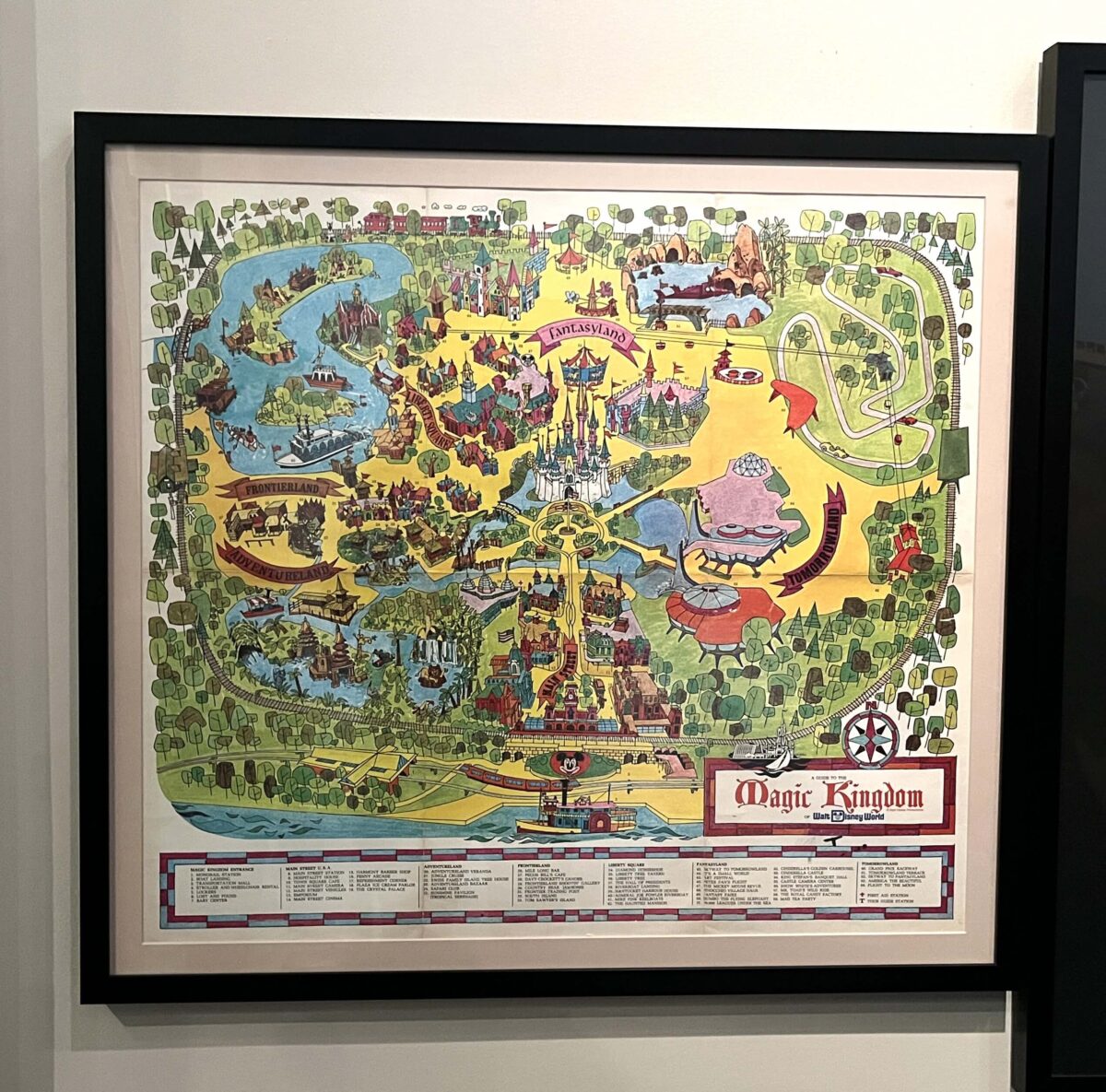
There were a handful of artifacts in the exhibit, but not as many as I liked. I enjoyed learning about the ones that were included.
A symbol is a thing that represents something else. Disney’s Davy Crockett TV show made the coonskin cap—the hat worn by the main character—a popular symbol of the early American West. People see hats like this and other symbols from the show in Frontierland.
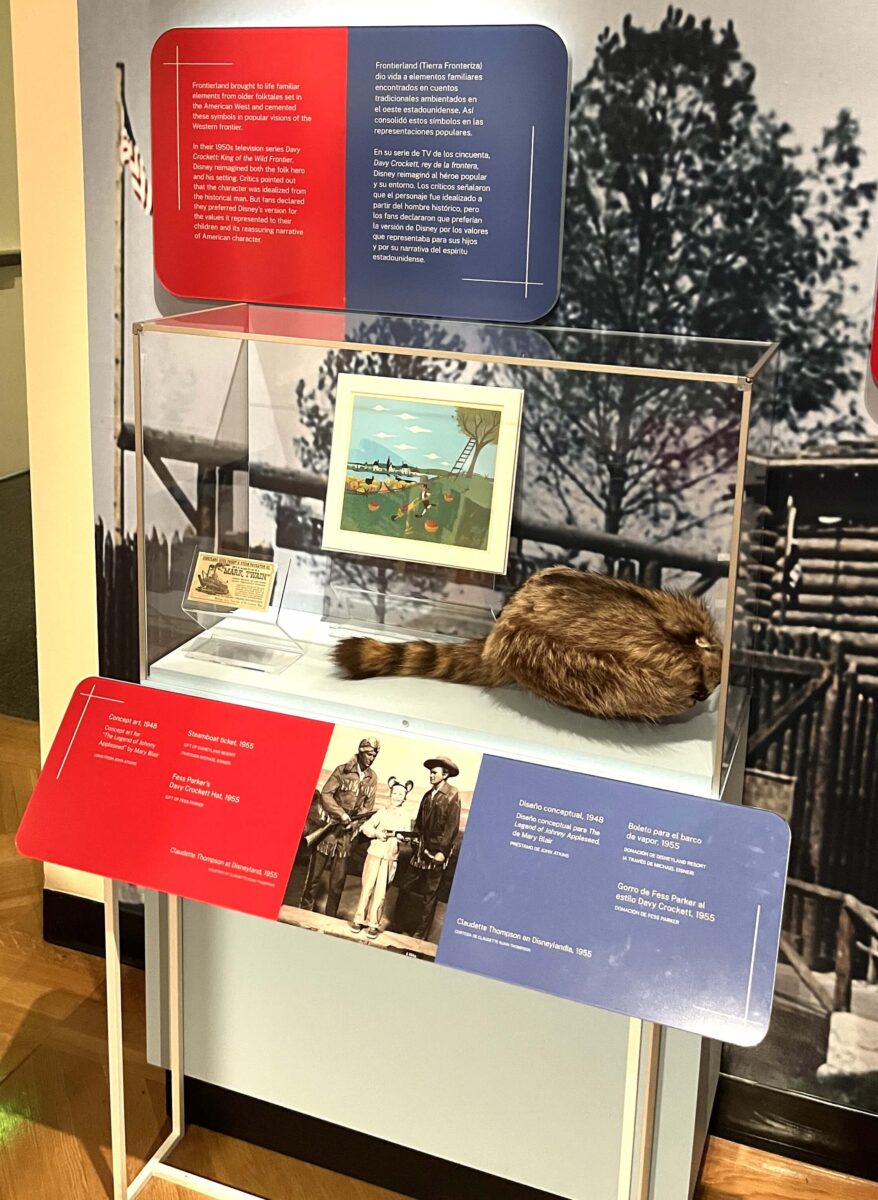
I understand that, due to the nature of the exhibit, including more artifacts can be challenging. Much of the focus was on representations that were unfair. Some of those were portrayed, but there’s a fine line to walk there. Other groups faced a lack of inclusion, which is also hard to convey in a collection.
One item in the exhibit that really had me excited was this depiction of Johnny Appleseed by Mary Blair. She’s my favorite imagineer and this small painting was her concept art for “The Legend of Johnny Appleseed.”
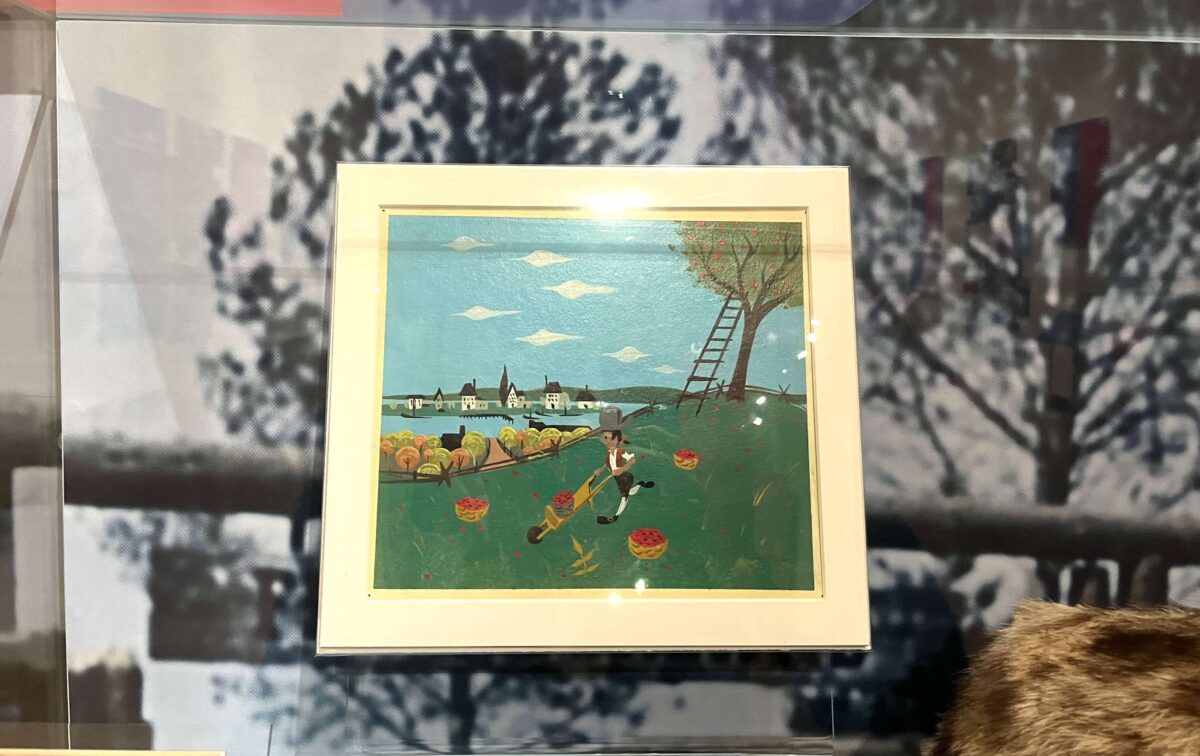
I was also excited to see some original Disneyland attraction tickets! Before the days of paid entry, the park was on a pay-per-ride system and used coupon books like this one. There were separate ticket books for children and adults.
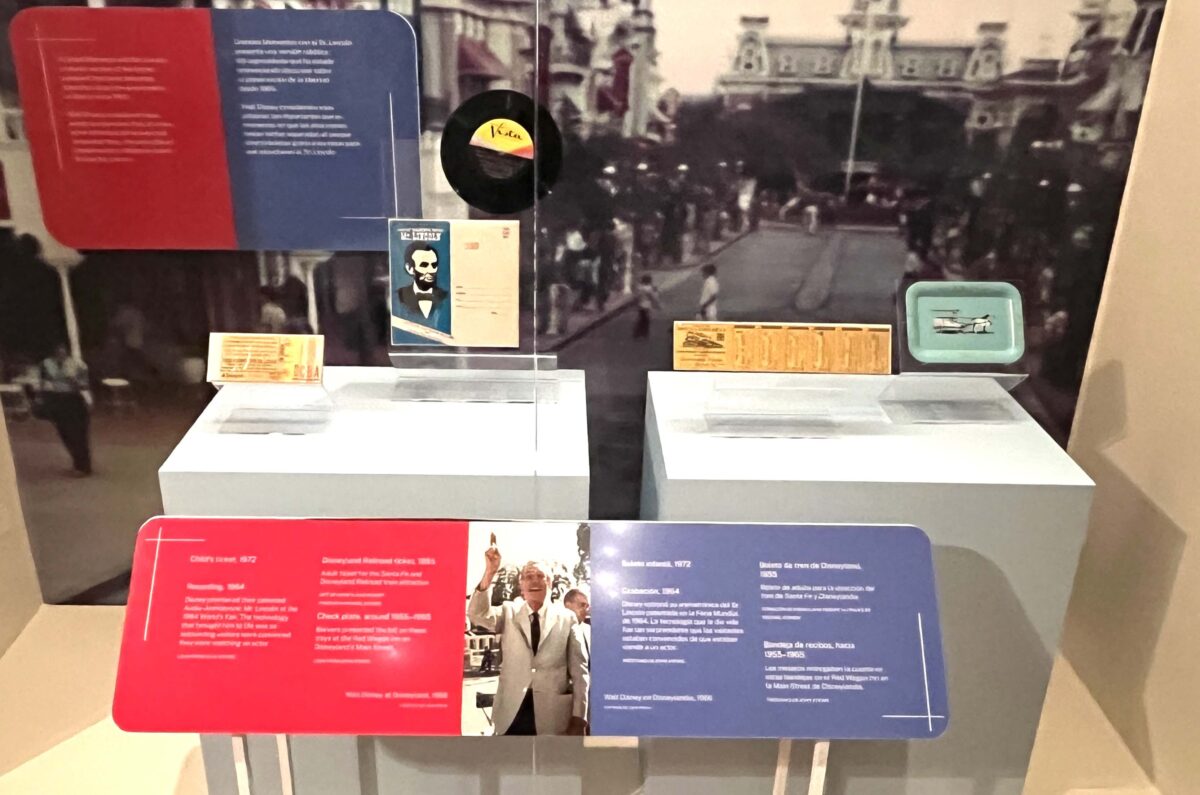
The exhibit had another section, “Claiming Space,” dedicated to groups who have sought inclusivity at Disney parks.
Since the late 1980s, the Disney Parks have become more welcoming to LGBTQ+ visitors. This comes from years of fans and employees asking for change.
At first, Disney advertised their parks with pictures of straight white couples and their children. Now, they show all kinds of families and couples visiting the parks. These images show Disney is changing. They also show America’s feelings about same-sex marriage are changing.
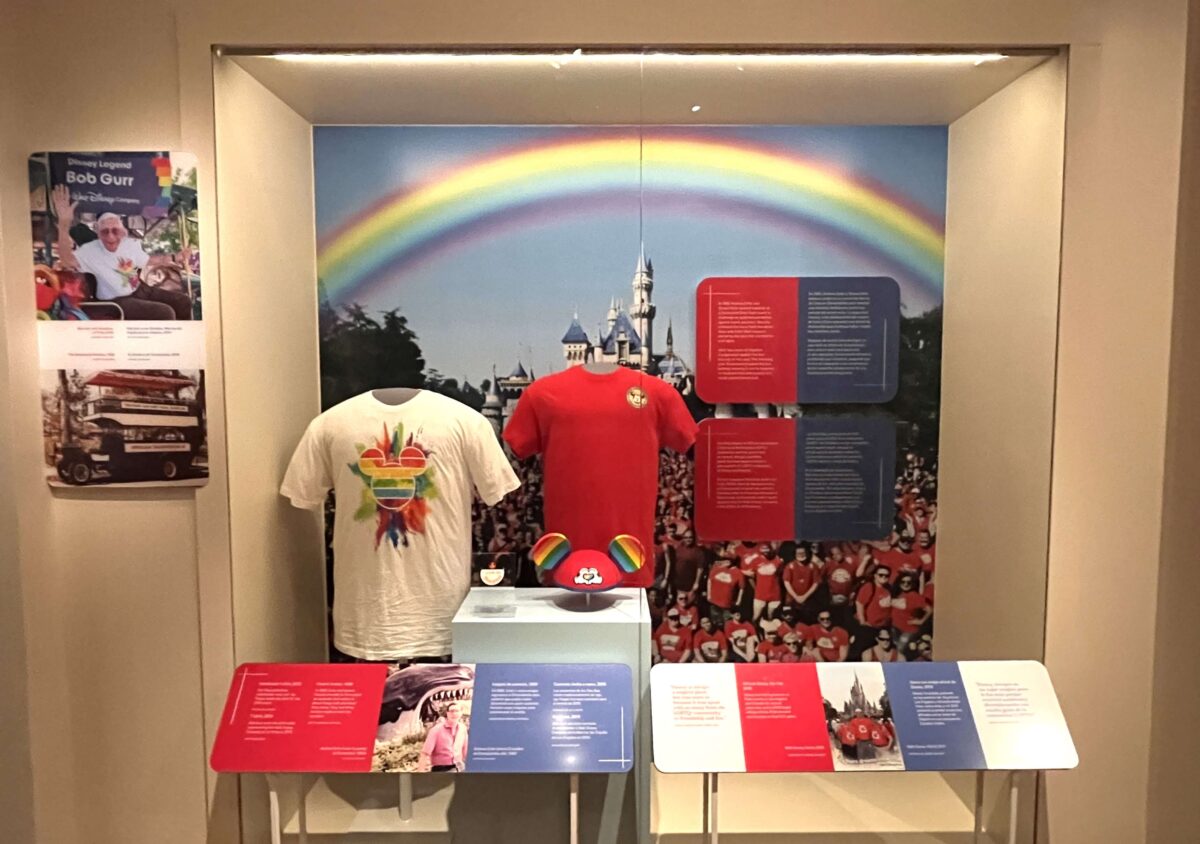
This display included a t-shirt worn by imagineer Bob Gurr during LA Pride! He is a legend.
Another display addressed Disney’s lack of diversity in princesses.
Many young visitors at Disney Parks want to meet a princess from a Disney film. Until the 1990s, all the Disney princesses were white. They didn’t reflect all the different kinds of park visitors and fans.
The character Princess Elena of Avalor first came to the parks in 2016. She is the first Disney princess based on Latino history and culture.
Princess Tiana was Disney’s first African American princess. Her film was released in 2009. Several months before that, she began appearing at the parks.
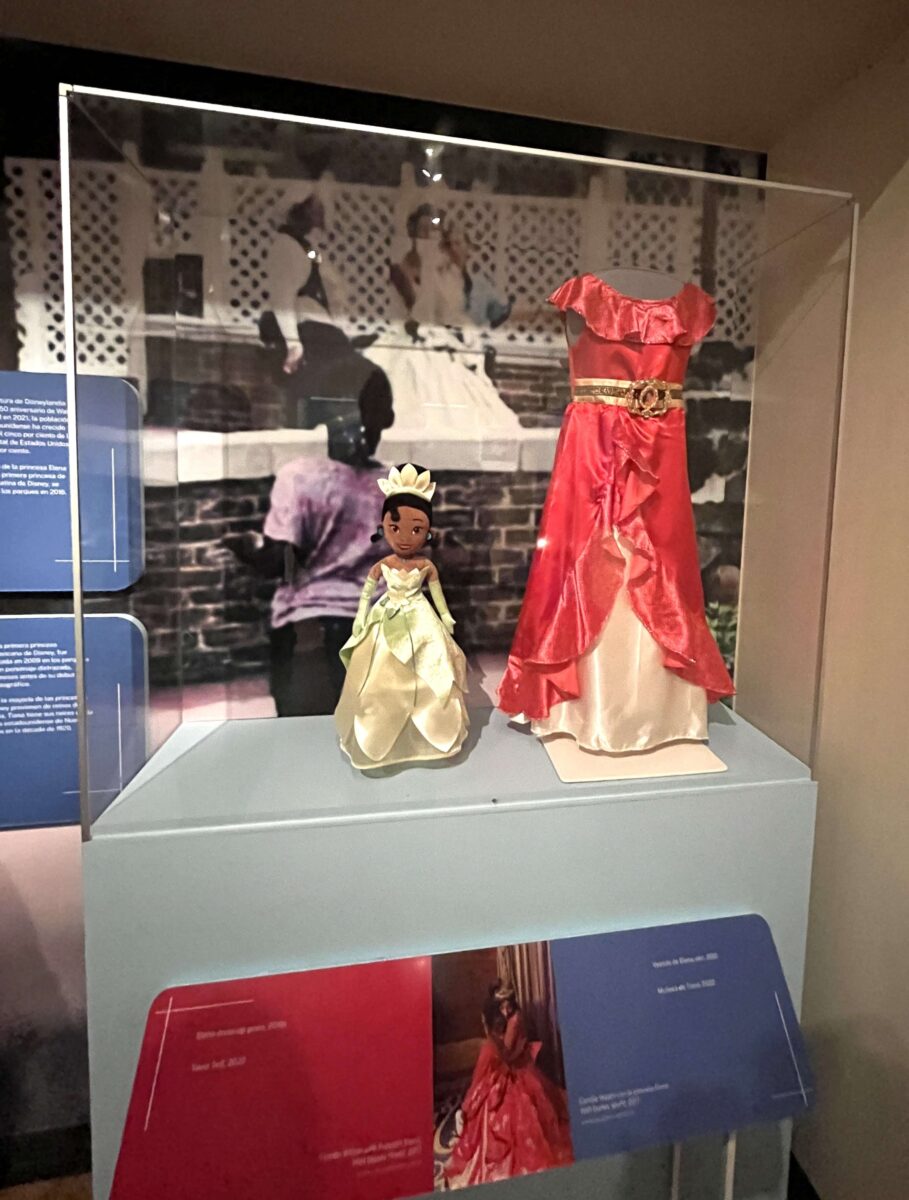
While I’ve seen the emergence of these princesses in real-time while raising my own daughters, I was surprised to realize these princesses made their debuts so late.
The exhibit also addressed more difficult and current topics, like the changes being made to Splash Mountain.
Splash Mountain’s old theme came from the 1946 Disney film Song of the South. That film was based on a collection of stories called the Uncle Remus tales. The film and the stories both included racist stereotypes about African Americans.
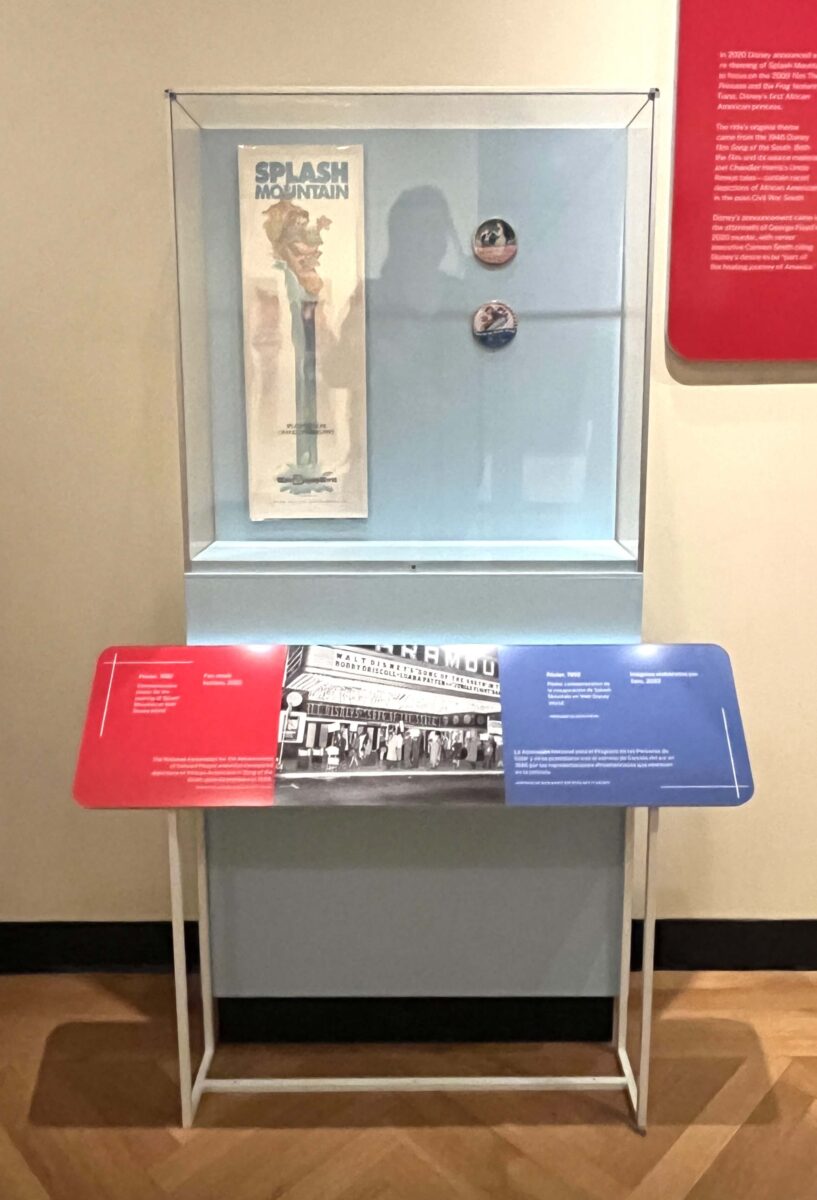
As we neared the end of the exhibit, we found a collection of Mickey ears. The ears included ran from classic to fantastic and even included handmade versions!
Fans show they love Disney by wearing mouse ears. Some fans change the simple black mouse ears to make them more personal. They add decorations that represent their personality or background. This creates a new picture of what a Disney fan can be. But symbols mean different things to different people. A symbol that is funny to one person could offend another person.
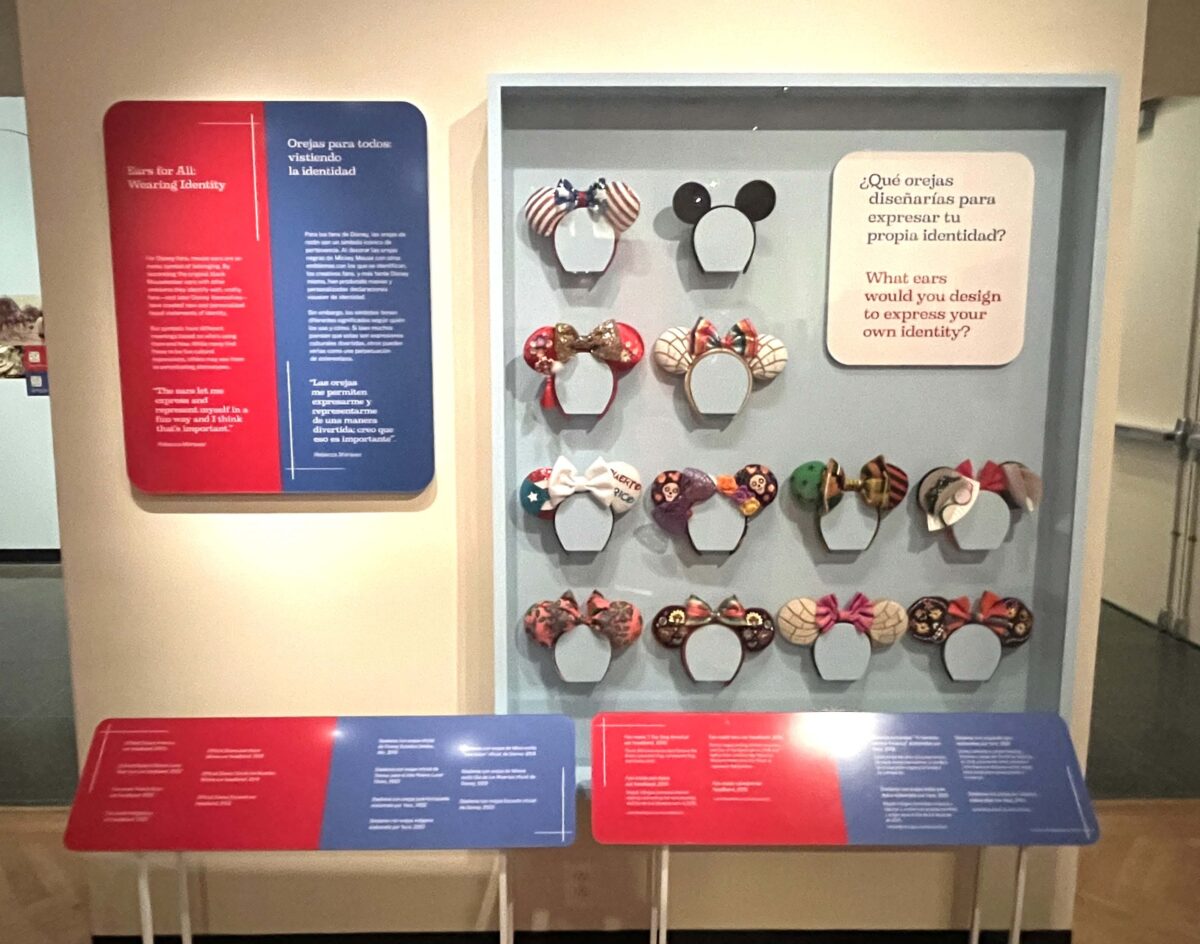
Overall Impression
I would have liked more information, more artifacts, and more Disney, but I loved the exhibit. It fairly addressed many historical and cultural issues in clear, concise language.
However, while my children liked seeing mouse ears and an old map or two, they didn’t understand the exhibit on the same level I did. They didn’t appreciate the changes that have happened over time or the gravity of some of the decisions. They are too young, they are too insulated, and know too little of history to be able to understand much of the topics in the exhibit.
Maybe when they are a bit older, they’ll be more curious about equity or American culture and I can share what I learned here.
To learn more, visit the exhibit or explore the Disney Plain Language Labels. This online list provides an accessible list of all of the labels in the exhibit. Reading through them gives you a very good idea of the concept.
Plan Your Visit
National Museum of American History
1300 Constitution Avenue NW
Washington, DC 20560
website
The exhibit is available through mid-April 2024.



